Here you will find all the information you will ever need to take care of your guinea pig properly. If you take the time to read each of these sections then I assure you that you will have the happiest guinea pig ever.
Guinea pigs need just as much care as any other animal such as a cat or dog. Because they live in a cage they can be easy to forget about or not think about.
With proper care and love, guinea pigs can live 5-7 years. Some may even live 8 or more years! Apart from feeding them right and getting them a large cage, you still have some other responsibilities that need to be taken care of. These include things like clipping nails, giving baths, getting them exercise, grooming and brushing, etc.
Table of Contents
Grooming your guinea pig
Grooming your guinea pig will help keep them in good condition. Regular brushing and nail clipping are good practices to maintain while you have your awesome pet. How often you need to brush or clip your piggies nails differs from guinea to guinea. Some have long hair, some have short hair, some have fast growing nails and others grow more slowly. Another big question is if your guinea pig needs a bath? You can find all the answers here and more.
Brushing your guinea pig
Brushing your guinea pig isn’t necessarily just to keep their coat looking good. While brushing your guinea pig you can also check for problems such as lice and/or sores on their body. It will also help to get rid of loose hair if your guinea pig is shedding. How often you should brush your guinea pig usually depends on the length of their hair and how much they shed. For a basic rule of thumb follow the advice below:
- Long-haired breeds: Guinea pigs with longer hair require daily brushing more than short-haired breeds. If not brushed daily with a small stiff brush or small metal comb then their hair may get easily matted and harder to deal with.
- Short-haired breeds: Guinea pigs with short hair have it a little easier than their long hair counterparts. Brushing is still recommended daily but not required. The hair does not get matted as easy, but brushing still helps brush out loose hair and lets you check for lice and sores.
Bathing your guinea pig
Guinea Pigs rarely need bathing. That’s right! If you’re wondering how often you should bathe your piggy, the answer is that you probably don’t need to. This is especially true if you are brushing your guinea pig everyday or every few days (depending on hair length).
When you SHOULD give you guinea pig a bath
There are a few exceptions when it comes to bathing your friend. These may be, but are not limited to the following:
- If your guinea pig has gotten lice or some other parasite living on its skin.
- If your guinea pigs fur has gotten nasty from urine, feces or something else.
- If your guinea pig has gotten dandruff or a fungal infection.
- If you are preparing to show your guinea pig.
When bathing your guinea pig you want to make sure to use a shampoo that is made for cavies. If you cannot find one from your local pet store then you can go with a small kitten shampoo. Make sure the water you are bathing your guinea pig in is shallow and warm. Not too hot!!! Lather up your guinea pigs body while doing the best you can to avoid their head and ears. Rinse off all soap and dry thoroughly before putting them back in their home. Be sure you get your guinea pig as dry as possible to avoid chills.
Clipping the guinea pig toenails
Cavies nails never stop growing. That means keeping them trimmed is a constant battle that you will always have to fight. Some nails grow out straight while most tend to curl when they get longer. This is not good for your guinea pig and can lead to bigger feet problems.
When clipping my guinea pigs toenails, I use a pair of regular human fingernail clippers. I find they work best and allow for minimum error. You can also use other styles but this is my prefered method.
One of my guinea pigs (Alvin) has black nails on almost all of his feet. This means I can’t locate the “quick” and so I have to be very careful when clipping his nails.
The quick is the blood supply that is inside the nail of the guinea pig. The longer the nail is, the further inside the nail that the quick advances. If trimmed regularly, the quick will naturally recede and stay further from the tip of the nail.
Clipping your guinea pig nails can be a scary process. Especially if your cavy has dark nails and you can’t locate the “quick”. Here I am going to try to explain the process myself, but I will also provide some outside links to help you out.
Guinea pig exercise
Guinea pigs need to exercise to stay healthy just like we do. If they do not get proper exercise then this can lead to obesity and obesity can lead to medical problems.
How does a guinea pig get excercise
Easy. Exercise for a guinea pig just means letting them run around a much larger area than their cage. This could be indoors or outside as long as their area is blocked off so that they can’t escape. If you are letting them run around indoors, then you need to make sure that your guineas can not get to anything that you dont want chewed up. Many wires and cables have been known to lose their life to guinea teeth.
When letting your guinea pigs out of the cage be sure to pick an area with an easily cleaned floor such as a kitchen (or any tile). From my experience I have noticed that Rascal and Alvin do no like going to the bathroom outside of their cage so droppings are usually minimal at best. A good way to make cleaning easy is to lay down a layer of newspaper before you let your furry guys out, that way it makes cleaning up after them a breeze!
One way to make floor time even more exciting for them is to hide little treats in easy to find places. Also, be sure to put some toys out for your guineas to play with such as a toilet paper roll filled with timothy hay.
Getting exercise while in their cage
Since guinea pigs can’t have floor time all the time, they need to be able to get some kind of exercise in their cage. If you have a C&C cage then you are already off to a good start. Head over to the cages page to read more about C&C cages.
A large cage is key to letting your guinea pig get exercise while inside his cage. Rascal and Alvin will run around the perimeter of their cage and popcorn in circles sometimes. This is great exercise! 90% of store bought cages are way to small to allow proper exercise for a guinea pig and not to mention they are generally 2 or 3 times more expensive than a larger and better C&C cage!
Guinea pig forage
Forages can be an excellent addition to any guinea pigs diet if they are selected properly. After all, grass is the backbone to a guinea pigs natural diet in the wild. Forages can provide Vitamin C and actually increase the health of your guinea pig. Grass, weeds and other plants come in a wide variety and guinea pigs love new flavorful goodies so why not give them what they want! Just make sure what you give your guinea is not dangerous!
Identifying forages
Pet owners who plan on giving their guinea pigs grass and weeds out of their yard, garden or a nearby feild need to be careful when selecting the plants. You want to always know 100% what you are offering your guinea pig. When you collect your plants you want to look for a couple things.
- You always want to avoid areas that have been treated with any herbicides, pesticides or other chemicals. If you are not sure then don’t pick it.
- You want to try and avoid areas that are frequented by dogs and cats or livestock as the plants can be contaminated with poo! Yuck!
- Steer clear from any plants that have mold, mildew, fungus or that just look questionable
- Don’t pick any plants from the sides of heavy trafficked areas
- Plants that are younger are often more nutritional and tasty. Older plants lose taste and nutrition when they start to make seeds. Some can even gain a bitter taste.
Guinea pig bedding
Choosing the perfect bedding for your guinea pig is not an exact science. There are some people who will swear by CareFRESH Ultra and some who will tell you recycled newspaper is the way to go. Others may just say use a fleece blanket because it sure does save money. You see, picking a bedding is a balance of pros and cons. You might pick one over another because you like the fact that its the easiest to clean. You might pick another one because its cheaper and easily attainable.
Types of guinea pig bedding
CareFRESH
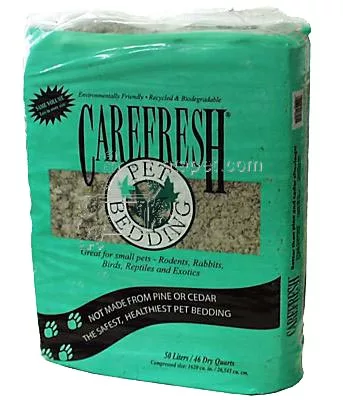
CareFRESH is perhaps one of the most, if not the most, popular brand of bedding out there. It is a soft, absorbant material made out of 100% virgin wood pulp. It contains no oils that wood chips may have and is sanitized to kill any bacteria, mold or fungus. There are no inks or dyes added in and it is 100% flushable although I find it easier just to scoop and dump in a bag. Regular CareFRESH has a little dustiness to it but does not seem to be enough to be harmful. If you want to make sure though, check out the CareFRESH Ultra section below this one. CareFRESH also has extremely good odor control which is a plus.
Pros:
- Soft and absorbs well
- Safe, no harmful extras
- Little dust
- Great odor control
Cons
- Slightly higher cost
- Difficult to notice bloody or other discharge
CareFRESH Ultra
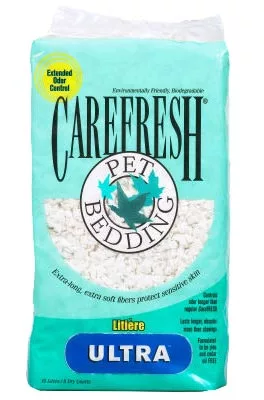
CareFRESH Ultra is a pure white version of CareFRESH with less dust making it a super safe and effective bedding for your guinea pig. If you can afford it, then this is a highly recommended product for you and your pig.
Pros
- Everything Listed above in CareFRESH
- Even less or no dust
- Pure white so its easier to spot bloody/discolored discharge
Cons
- Higher costing
- May be hard to find in some areas
Cedar
Cedar is toxic to your guinea pig. Do not use this as bedding!
Cell-Sorb Plus
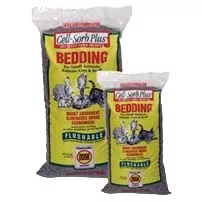
This is a very good bedding for your guinea pigs. The only problem is that it is really hard to find. Cell-Sorb Plus is made from recycled newspaper but is softer than other newspaper products such as Yesterdays News and BioFlush. Cell-Sorb is amazing in controlling odors and eliminating ammonia. According to their website, Cell-Sorb is 400% more absorbant than wood chip products and safe for all pets and the environment. Several sources say Cell-Sorb Plus is more cost effective than CareFRESH because you do not have to change it as often. I have not had a chance to use Cell-Sorb Plus so I can not offer my personal experience.
Pros
- Great odor control and ammonia elimination
- Safe for all pets
- 400% more absorbant than wood chips
- Can be flushed safely
- Little to no dust
- Can be more cost effective because it lasts longer
Cons
- Extremely hard to find in stores
- Probably have to order online.
Fleece Blankets
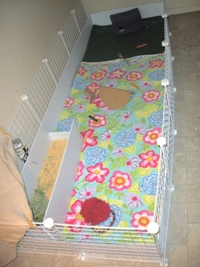
Fleece blankets are often used in homemade C&C; cages. Fleece is a great option for bedding because it is cheap, and can be washed and reused. Fleece does not absorb urine, so many people lay this over something more absorbant or have a “litter area” in their cage. I have personally used fleece and I recommend it highly. With fleece you don’t have to worry about dust or other common problems found in other beddings. Its soft and comfortable for your guineas to lay on and you can get any color or pattern you like to “decorate” their home with. The only downside is washing every week or so, but its not bad if you don’t mind doing laundry.
Pros
- Great safe option
- Inexpensive, especially in the long run
- Wash and Reuse
- Soft so you guinea pig will love to lay on
- Urine and other liquids seep through so it will not get wet. (polyester)
Cons
- Hay and poo have to be shaken off before washing
- May require daily “spot cleaning”
- If you don’t like doing laundry then this is not for you
Pine
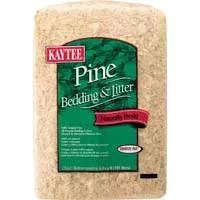
Pine is an inexpensive wood chip bedding that is lighter in color than cedar. Like cedar though, it gives of phenols which may be toxic or harmful to your guinea pig. This is a highly debated matter. Some claim that their piggies have lived on pine their whole lives and are healthy as can be and others argue that pine is the reason their guinea pigs got sick. Regardless, the risk of pine seems to be less than that of cedar. When buying pine you want to make sure you have pine that is “kiln dried” only. I do not personally recommend this unless you are on a strict budget.
Pros
- Readily available
- Easily Afforable
Cons
- May be toxic (heavily debated)
- Dust can cause respiratory problems
- Sticks to towels and fleece
- Not as soft as paper products
Wood Pellets
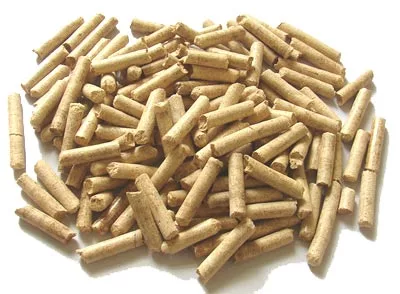
Wood pellets are very inexpensive for a 40lb bag. They are also extremely heavy so pine shavings are usually more cost effective by volume. Wood pellets may be hard to find, but can generally be found where wood stoves are being marketed or online. I would NOT recommend wood pellets as a bedding to anyone because they can be harmful to your guinea pigs. Wood pellets are hard to walk on for your guinea pig and can also contain accelerants for starting fires. This is unhealthy for your guinea pig.
Pros
- Inexpensive
Cons
- Hurts your pets feet
- You have to use 2-3 times more than a bag of CareFRESH or other beddings
- Difficult to find
- Pine shavings are more cost friendly by volume and are a better option in my opinion.
Guinea pig cages
Choosing a cage for your guinea pig isn’t always as easy at it seems. It is extremely important that your guinea pig has enough space to run, exercise, play and that your cage is safe.
Keeping a guinea pig in a cage that is not suitable for them can cause many problems and decrease the lifespan of your guinea pigs.
Types of guinea pig cages
- Aquariums – Its really sad to know that people actually put their guinea pigs in these things. Aquariums are not made for rodents!!! There is low ventilation, quick ammonia build up from urine, risks of heat strokes from high temperatures, little space and many more problems with them. NEVER USE AN AQUARIUM FOR A GUINEA PIG.
- Plastic Bottom, Wire Top – This is your basic petsmart or any other pet store cage. They might say things such as, “Guinea Pig Starter Kit” and the such. 99% of these cages are too small for your guinea pig. Occasionally you will find one of these that is big enough for 2 guinea pigs but its rare. There is nothing wrong with the way the cages are built. The wire top allows for great ventilation and the plastic tray bottom usually has sides high enough to keep litter in. For size recommendations see the next section below.
- Cubes and Coroplast Cage – Also known as a C&C Cage, this is THE BEST cage your guinea pig can have. C&C cages are made out of storage cubes (which can be bought at stores like walmart and target), and coroplast. Coroplast is a thick and sturdy plastic type material that is used for signs and can be obtained at sign shops. These cages can be as big as you want since you build them yourself and they are often times cheaper than store bought cages. Bigger and Cheaper!
- Other Cages – There are a wide variety of other cages I have not described. Dont get any cages that have 3-4 levels. Those are for ferrets and chinchillas. Guinea pigs generally DO NOT climb and they risk injury if they fall off one of the levels. Don’t put your guinea pigs in anything with high solid walls that heat and ammonia can build up in such as large plastic storage bins. If building your own cage and you’re are using a wood based bottom, be sure to use some kind of protection and treat the wood so the urine will not seep in and ruin it. Do not use any kind of cage with a solid/enclosed plastic top/lid. That is just common sense. Guinea pigs need ventilation! Other rules of thumb include: No sharp edges, no toxic materials, guinea pigs like to chew so be careful where you put nails and glue, and be sure to have good ventilation.
How much space does my guinea pig need
Did you know that almost all guinea pig cages sold in stores are too small for your guinea pig.
If you plan on buying a basic guinea pig cage from a pet store, such as the one on the left, DON’T! These do not give your guinea pig ample space for living, playing or exercising. Guinea pigs are not just critters you throw in a small cage and look at occasionally.
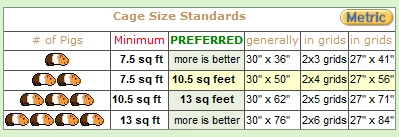
The best rule of thumb when it comes to selecting a guinea pigs cage is: BIGGER IS BETTER. 7.5 sq ft may seem like a lot to you, but it’s really not. Especially if you put it in the terms of 30 inches by 36 inches. If you do not believe you can provide this amount of space then please do not get a guinea pig.
Why do they need such a big cage
Guinea pigs need room for exercise, playing and living. A small cage does not give your pet enough room except for having a place to sleep, eat, and poop. Guinea pigs in smaller cages risk becoming overweight due to lack of exercise. Not to mention guinea pigs are social creatures, so having more than one is ideal, and having two guinea pigs in a small cage is nothing less than animal cruelty. You wouldn’t want to live in a litter box would you?
- Stimulation – How would you feel if you had to live in a small room every single day for the rest of your life? Eating, sleeping, entertaining yourself and relieving yourself in that room. How about sleeping on top of your urine and feces? That is what a small cage is to a guinea pig. Guinea pigs need stimulation and they enjoy change. Having a larger cage will help keep your little friend happier and content for much longer.
- Seperation – Sometimes you may have need to separate your guinea pigs. Two male guinea pigs may have a disagreement and fight. Perhaps your little female girls aren’t getting along? Just got a new guinea pig and you don’t want to put two opposite-sex guinea pigs together? Sometimes your guinea pigs may just want to be alone for a while. Well having a large cage will allow any of these scenarios to play out. Dividing a C&C cage into two parts is really simple with grids and connectors/wire ties.
- Exercise – Exercise is just as important to guinea pigs as it is to humans. Guinea pigs that do not get enough exercise can become overweight. Overweight guinea pigs are more likely to have health problems just like humans. These problems can include but are not limited too: heart disease, diabetes, bladder infections, respiratory problems, bumblefoot, etc.
- A happier guinea pig – There are many, many stories of how guinea pigs change once they get into a proper size cage. I personally had only one guinea pig and a cage that was bought from a store. I had not done any research on them and didn’t know any better. Today I have a pair of wonderful males and they are amazingly happy in their larger cage. The moment they entered their new cage they were popcorning and running around like crazy. It was quite an inspiring site and made me feel accomplished. Don’t take my word for it though, there are hundreds of others out there that will tell you the same thing!
- A happier you – Did you know that a larger cage, especially a C&C cage, is 10x easier to clean than a smaller store bought cage? Scooping litter out is a breeze and the total clean-up may only take 5-10 minutes. Not too mention, using fleece as a bedding instead of carefresh can save you a ton of cash. Less cleaning usually means less frustration and more time enjoying your pets. You won’t see them as a hassle and your guinea pigs will be even more entertaining in a larger cage. So putting your guinea pig in a large cage is not only good for them, its great for you as well.
Adult male guinea pigs that do not get proper exercise can develope a condition called impaction. Impaction is a loss of muscle tone around the anal area. This causes droppings to get backed up in your guinea pig and can be dangerous. This also requires cleaning by the guardian. A proper sized guinea pig cage can ensure that your guinea pig is healthy, toned, and that you never have to clean his rear end.
Adult female guinea pigs that are overweight tend to put on the weight around their bellies as they grow older. This makes it much harder to detect ovarian cysts and can lead to other related health problems.
The perfect guinea pig cage
C&C cages are simply the perfect guinea pig cage
Did you know C&C cages almost always cost less than store bought cages and are many times bigger?
That’s right! So what is this C&C cage I keep mentioning? Well a C&C cage stands for “Cubes and Coroplast” cage. The “cubes” are just the wire storage cubes that can be found at stores like target, walmart, k-mart etc. The cubes make up the sides of your guinea pigs home and are held together by connectors that come with them and by wire ties. “Coroplast” is a plastic material that is used in sign shops. Most local sign making shops carry coroplast and will happily sell it to you in sheets or at a specific cut size.
Water for a guinea pig
A lot of people think that just putting water in a bottle is good enough until it runs out. This is untrue. If you want your guinea pig to be healthy then you can help by changing their water bottle daily.
There are a few options for giving your guinea pig water, but the best is through a bottle. Water bowls tend to become messy and must be replaced several times a day.
- Fresh Water should be given to your guinea pigs daily!
- Be sure not to leave a water bottle that leaks in the cage.
- Remove any bedding that may of gotten wet due to dripping or leaking.
- Guinea Pigs that eat more fruits and vegetables are likely to drink less water. This is OK.
- If your guinea pigs only have pellets and hay to eat (not recommended), then fresh water is EVEN MORE IMPORTANT.
How to choose a water bottle
If you own a guinea pig then you know guinea pigs LOVE to chew. If not, then you have been warned =] So you cant pick up any old water bottle and expect it to work fine.
Picking a water bottle is simple. The most important rule is to find a thick sturdy water bottle that is “chew proof”. Its also a good idea to always hang your water bottle on the outside of the cage and not the inside. Water bottles can slide easily on some cages so make sure it is secured tightly when putting it on. I have found it useful to use shoestring before, as my guineas did not chew on it and it was easy to untie daily.
If you don’t want to use a water bottle then it is possible to use a water dish. The problem with this is that when guinea pigs play and run around, they inevitably end up getting the dish filled with bedding, food and poo. Yuck! So if your going this route you will need to check your guinea pigs water every couple of hours.
Another issue with having a water dish is that guinea pigs can and will knock over things they can lift up. So if you do not have a heavy enough dish, water will be spilled everywhere, creating a bigger mess! A water bottle with a stainless steel ball sipper is a much more effective option.
Vitamins for guinea pigs
Guinea pigs and humans share an interesting thing in common. Neither of us can produce our own Vitamin C. What does this mean? Well if you have read anything about feeding guinea pigs (especially on this site) then this means that guinea pigs need to get their Vitamin C from the food that they eat. This is why I stress so much about feeding all guinea pigs a diet with pellets, hay, fruits and vegetables.
How much vitamin c does my guinea pig need
Chances are if you are feeding your pets an adequate diet of pellets, hay, fruits and veggies then your guinea pig is getting enough Vitamin C. Most sources agree that between 10 and 30 mg/kg daily Vitamin C is enough to keep guinea pigs healthy. Upwards of 50 mg/kg can be given if your guinea pig is suffering from deficiency.
Guinea Pigs are usually happy little critters and move around a lot. If you notice any change in your pig such as barely moving when you go to pick it up or not doing anything but lying down all day then be sure to increase Vitamin C intake for a week to see if condition improves as this can be a sign of scurvy.
Some of these symptoms listed above may not only be because of Vitamin C deficiency. If you know your guinea pig is receiving sufficient Vitamin C then bring your guinea pig to an experienced vet to check them out. Vets that don’t deal with guinea pigs too much will write it off as Vitamin C deficiency.
My guinea pig has scurvy
If your guinea pig does start showing signs of scurvy it can be easily cured by providing extra Vitamin C to the guinea pig. Just don’t panic, Vitamin C deficiency is second to most other medical issues for guinea pigs. Scurvy can generally be cleared in about a week of treatment.
Vitamin supplements
Many pet stores sell Vitamin C supplements that you add to your guinea pigs food. The problem with these is that Vitamin C is constantly degrading. So in 6 weeks, that fresh bag of pellets has half the amount of pellets it did when you bought it. This is important to know if you are buying Vitamin supplements.
- I recommend just allowing your guinea pig to get their Vitamin C from fresh fruit, veggies and hay.
- If you do need a supplement then the best would be a 100mg pill that you can split into fourths. (25mg per 1/4)
- Sources say that liquid supplements degrade quickly; others say that they work with success.
Guinea pig hay
Having hay for your guinea pigs is extremely important. It should be available to your guinea pig 24 hours a day and 7 days a week. This can be achieved easily by buying (or making) a hay feeder and replenishing it as needed. Guineas love to play, eat, frolic and hide in it so you can never have too much. You can even buy it in bulk and use it for bedding! There are two main types of hay to choose from. Read below for more info.
Selecting the right hay
Not all hay is the same. The two main hay sold in stores are Alfalfa and Timothy Hay. It is important to know which to feed your guinea pigs.
Alfalfa
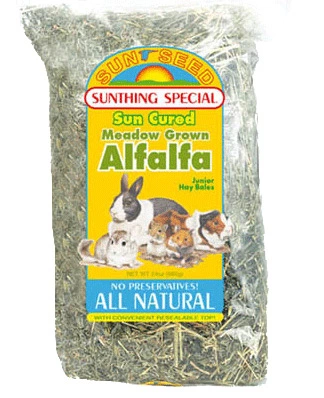
- Alfalfa should only be given to guinea pigs younger than one year of age and to guinea pigs that are pregnant.
- Giving alfalfa to adult guinea pigs that are not pregnant can cause bladder problems and calcium build up.
- Alfalfa can be giving to adult guinea pigs in small quantities once a week as a treat.
Timothy Hay
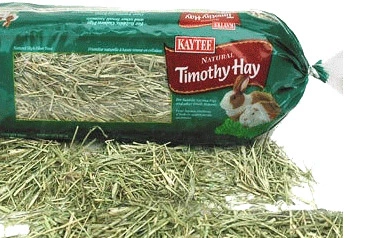
- Timothy Hay is much more nutrient safe for adult guinea pigs.
- Adult guinea pigs should have access to timothy hay 24/7
- Has less calcium and crude protein than alfalfa which makes it healthier
Other Hays
Other hays consist of barley, bluegrass, clover, meadow hay, wheat and more. I personally do not have much knowledge on any of these hays as I do not use them because timothy hay is much easier for me to acquire.
Guinea pig pellets
Pellets are the most common source of food for guinea pigs. They can be found in most pet stores and other stores like Walmart and Target. As with any other animal food, there are many varieties and brands to choose from. Choosing the wrong pellets for your guinea pig can cause health problems, malnutrition from not getting enough nutrients, calcium build up and a shorter life span. Pellets for your guinea pig should always be fed in a heavy ceramic bowl or something similar that they cant tip over.
Selecting quality pellets for guinea pigs
Most bags of pellets carried in pet stores such as Petsmart and PetCo are not ideal for your pet. When selecting the pellets the first thing you want to find is a bag with just pellets. This is important because added ingredients may be harmful to your guinea pig.
Alfalfa based pellets vs Timothy based pellets
Most retail pellets are alfalfa based. Alfalfa based pellets are perfectly fine for young, growing, and pregnant guinea pigs. After your pig reaches about a year old, timothy hay based pellets are a much better and more healthy option.
I can’t stress enough how important it is to get your guinea pig a timothy hay based food after it has reached adulthood!
How much pellets should I feed my guinea pig
Most guinea pigs will not overeat so you can just pour the pellets in the bowl without measuring. Guinea pigs eat around 1/8 cups of pellets daily with access to vegetables and hay. If no fruits/veggies or hay are available then your guinea pig may eat more.
How often should I change/remove food from the cage
Guinea Pigs should be given fresh pellets daily. Even if they have some left over from yesterday, those pellets should be trashed and a new bowl should always be made available. For fruits and vegetables, I recommend not leaving them in the cage for more than 3-4 hours before removing. I’ve read in a few places that its ok to leave fruits/veggies overnight and remove them in the morning but I don’t recommend it. Besides, my guinea pigs always eat their fruits/veggies within an hour if its in the cage.
Guinea pig sounds
Whether you’re new to raising guinea pigs or not, it’s important to understand all of the standard guinea pig sounds that most of them will make. The reason for this is because such sounds are actually a form of vocal communication, as opposed to just random noises. Understanding these sounds is the key to understanding your guinea pigs in terms of when they’re hungry, happy, distressed, etc. Having this knowledge is helpful for being able to care for them properly.
Let’s jump straight into the list of various guinea pig sounds that you can expect to hear, and what they mean exactly.
What are the different sounds guinea pigs make
Wheeking
One of the most distinctive guinea pig sounds you will probably hear is a kind of ‘wheeking’ sound. This usually just means that they’re hungry and excited (about being fed!), or craving attention. However, don’t over feed them if they’re wheeking when they’ve already been fed. Overfeeding is a common and unhealthy mistake.
Purring
Purring can have a couple of different meanings. A high kind of purring noise that a guinea pig makes, usually means that he or she is annoyed or uncomfortable. A lower, calmer type of purring usually signifies comfort and enjoyment. This is not to be confused with rumbling, of which it sounds similar to.
Rumbling
The rumbling noise a guinea pig makes is usually done by males to sexually entice females, often assisted by a mating ‘dance’ where they circle females while swaying their hips. This sound is also commonly made by females that are in season.
Shrieking
If you hear a guinea pig making a shrieking kind of noise (sort of like a high pitched squeak), it means he or she is in fear or pain, or just very alarmed about something. As far as guinea pig sounds go, shrieking is the one that most likely means your guinea pigs are possibly fighting.
Whining
A whining/moaning sound is not uncommon with a lot of guinea pigs, especially when you have more than one sharing a cage. They can get easily annoyed with each other, and the whining noise is how they express this. Some, on the other hand, will live together in complete peace. Whining on its own is usually not something to be too concerned of.
Teeth Chattering
When a guinea pig is teeth chattering, it’s a sort of warning that is often made to another guinea pig that is agitating them. Normally they will back off after this. Teeth chattering is common among guinea pigs that are new to each other. It can also be done towards a human, but just about any guinea pig will warm up to a gentle person.
Those are the common guinea pig sounds to be aware of. Being able to completely differentiate them from each other can take a little bit of time. It is really just about using your senses and then knowing how to treat your guinea pigs properly based on how they’re feeling. It is good to know when to give them attention and realizing when they may want to be left alone.